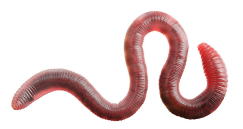This problem solving activity has a number focus.
It has been raining. In a paddock 273 worms have come to the surface. The seagulls are gathering.
Gulls are satisfied if they eat 11 worms in 'one sitting'. How many gulls can be satisfied by the worms in the paddock?
Gulls can also ‘drum up’ worms by ‘running on the spot’. A flock of 34 gulls lands in the paddock with 273 worms.

How many worms do they need to drum up so that they are all satisfied?
In another paddock there are 359 worms.
Another flock lands there and drums up enough worms for each gull to be satisfied. The leader of the flock even gets two extra worms. How many gulls could be in this flock?
- Select the appropriate number operation(s) to solve problems.
- Devise and use problem solving strategies (act it out, draw a picture, organised list).
This problem requires the use of all four arithmetic operations. Students must recognise which operation to apply and when.
An approach to finding the solution to each part of the problem is for students to ask themselves What do I know? and How can I use this to find out what I don't know?
The Problem
It has been raining. In a paddock 273 worms have come to the surface. The seagulls are gathering.
Gulls are satisfied if they eat 11 worms in 'one sitting'. How many gulls can be satisfied by the worms in the paddock?
Gulls can also ‘drum up’ worms by ‘running on the spot’. A flock of 34 gulls lands in the paddock with 273 worms.
How many worms do they need to drum up so that they are all satisfied?
In another paddock there are 359 worms. Another flock lands there and drums up enough worms for each gull to be satisfied. The leader of the flock even gets two extra worms.
How many gulls could be in this flock?
Teaching Sequence
- Introduce the problem by showing the students the pictures of gulls and worms and asking them to pose questions about them. (List these for early finishers to try.)
- Pose the problem to the class.
- Ask them to think about the first question and the number operation (addition, subtraction, multiplication or division) that they would use. Encourage them to explain their selection.
- As the students work, in pairs or individually, ask questions that focus their thinking on their selection of number operations and the algorithms they are using.
What number operation(s) are you using? Why did you select it?
Show me how you are working out the calculation.
Are you sure that you have solved the problem correctly? How do you know?
Does your answer look reasonable? Why? - Ask that the students record their solutions so that they can be displayed and shared with others.
- Display solutions. Let the students look at the other solutions.
- Discuss the solutions.
Extension
To part (b). Predict and find out the number of worms that will have to be drummed up for 49 gulls? For 100 gulls? Try to find a pattern for any number of gulls.
To part (c). Is there only one possible solution to the number of gulls that can be fed? How many extra worms are needed to feed these gulls?
Solutions
a. 273 ÷ 11 = 24 with remainder 9. So 24 gulls can get their fill.
b. 34 gulls need 34 x 11 = 374 worms. There are 273 there already. So they have to drum up 374 – 273 = 101 worms.
c. 359 + the number of drummed up worms = 11 times the number of gulls plus 2. So 357 + the number of drummed up worms = 11 times the number of gulls. This means that we have to find a number that, when added to 357 gives a multiple of 11. 357 = 32 x 11 + 5. To make this up to a multiple of 11 we need to add on 6. Then we have a total of 363, which is 33 x 11. So there could have been 33 gulls in the flock in the other paddock.
Solution to Extension (b)
Patterns are often most easily found by making a table. The number of drummed up worms is the number of worms needed less 273, the number of worms already on the surface.
| number of gulls | 34 | 35 | 36 | 37 | 38 |
| worms needed | 374 | 385 | 396 | 407 | 418 |
| drummed up worms | 101 | 112 | 123 | 134 | 145 |
The table makes clear what should be obvious. Every new gull needs 11 more worms. So for 49 gulls we have 15 more gulls than the original 34 and so we need 15 x 11 = 165 more worms. Altogether then they need to drum up 101 + 165 = 266 worms.
Alternatively, 49 gulls need to drum up 49 x 11 - 273 = 539 - 273 = 266 worms.
So 100 gulls then will want 100 x 11 - 273 = 1100 - 273 = 827 worms. Have the students to put this pattern into words.
Solution to Extension (c)
The crucial step in the original problem is to notice that we had to make 32 + 5 up to a multiple of 11. In part (c) we did this by adding 6. However, we could have added 6 + 11, 6 + 11 + 11 and so on. So we could have added 6 plus any multiple of 11. In this case we get 1 more gull for the ‘6’ and one more for each ‘11’. So any number of gulls can be fed. To do this exactly though, the number of worms needed is 6 plus an appropriate multiple of 11.